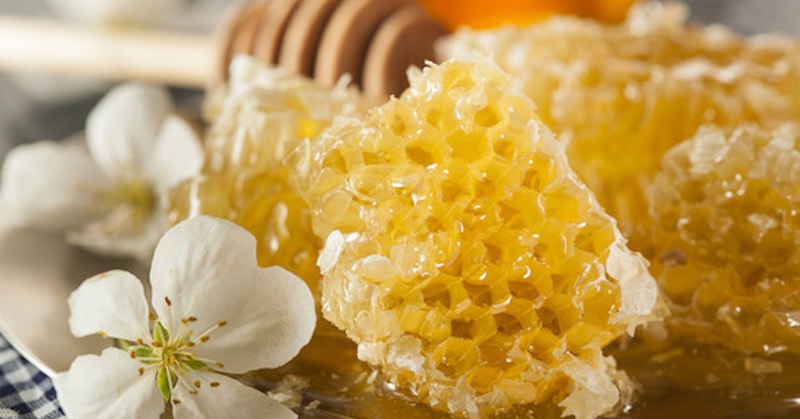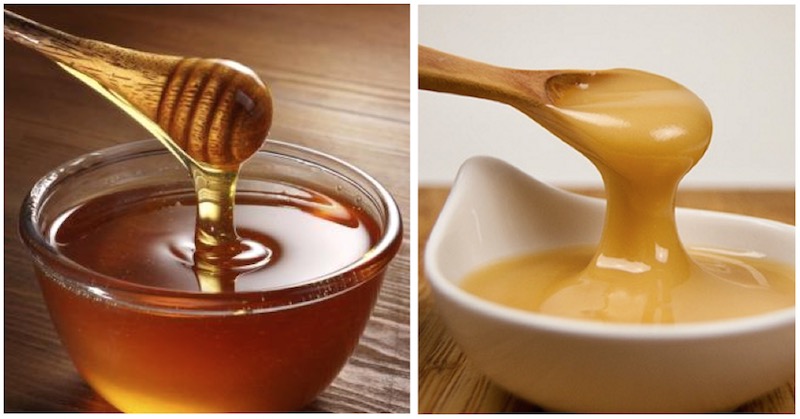5 At Home Tests You Can Do To Tell If You Have Bought The Real Or Fake Honey
Last updated on
The next time you find yourself in the honey aisle of your favorite grocery store, thinking about which honey to buy; the pricey, premium, artisanal honey or the store-brand nectar contained in a plastic bear, you might want to think twice before choosing based on price.
Whether you’re glazing a ham, sweetening some tea, or just drizzling some on some toast or strawberries—honey is very versatile. Honey has been touted for its amazing effects outside of the kitchen, too, such as being an antibacterial and antifungal, being able to reduce ulcers, and help to improve one’s mood.
The Egyptians were particularly fond of it and archaeologists found 3,000 year old honey in a tomb that was still edible! Real honey never expires. However, not all honey is created equal and next time you find yourself reaching for that golden plastic bear, you may want to think twice.
A USDA Label Doesn’t Mean Your Honey Is Pure
Steer clear of substances given different names like “honey products” or “honey blends”. Just because it’s expensive, doesn’t mean it’s authentic, quality honey.
A recent investigation of the honey market discovered that over 75% of all grocery-store honey was “ultra-filtrated,” which removes not only impurities such as wax and bee parts, but also all traces of pollen. It’s expensive and doesn’t significantly improve shelf-life, despite what manufacturers would like you to believe. What’s the big idea? Basically, honey laundering.
Pollen is the only sure-fire way to trace a honey straight to its source and ultra-filtering honey can mask its shady origins. Most likely, it’s been imported from China, where honey is cheap and heavily subsidized.
However, Chinese honey is also subject to heavy import tariffs on account of its propensity for being contaminated by illegal antibiotics and heavy metals. Thus, Chinese manufacturers will ultra-filter their honey, then sneak their products into a US territory where it will then get slapped with a “Made in the USA” sticker and onto our shelves.
All of this funny honey is no laughing matter. It’s putting everyone who enjoys honey, either as a health benefit or simply as an alternative sweetener, at risk. So, how do you protect yourself?
- Don’t eat the pre-packaged honey from KFC or McDonald’s, nor the “Winnie the Pooh” kind from Wal-Mart as 100% of these samples had no traces of pollen.
- 77% of honey from stores like Sam’s Club, Target, and Costco had no traces of pollen.
- Know the source. Buy locally, whenever possible. Not only will this ensure your honey is legitimate, it’ll also help reduce your seasonal allergies by acclimating your body to the local flora through the ingesting of pollen.
If you can afford it, Manuka honey from New Zealand is the only honey that has been approved by the FDA to treat wounds and burns and thus is most likely to be legitimate and good for you on several levels.
How To Tell If Your Honey Is Pure Or Fake
Appearance
Real and pure honey is thick and doesn’t move from one side of the jar to another when the jar is tilted (not very fluid). Easiest way of assuring that you buy the right type of honey, is to find those that are crystallized and you can be sure they are pure honey.
Crystallized honey has an opaque texture (not transparent/clear)—see picture on the right below. Crystallization is the process of the honey sugar separating. If you bought pure honey, it may take any time from a few weeks to months before you see it crystallizing.
Here are some simple tests you can do right at home to check whether your honey is real or fake. One thing to keep in mind is that fake honey is basically water (moisture) and manmade sugar, whereas pure honey is thick, concentrated with natural sugar.
1. Bee’s Hexagonal Shape Test
Nature is just amazing. Put a drop of honey on a white saucer. Add a few drops of water on the honey and shake the plate in a circular motion. Leave it for a while and pure honey will begin to form a hexagon shape of the honeycomb.
2. Put It In The Fridge.
Fake honey that is full of manmade sugar will harden. Pure honey will not harden and is easy to scoop even after it is left it in the fridge for some time, although it doesn’t need refrigeration.
3. The Thumb Test
Put a small drop of the honey on your thumbnail. If the honey spills or spreads around, that’s an indication that it isn’t pure. Pure honey will stay intact on your thumb.
4. The Water Test
Pour some water into a glass. Then, add a tablespoon of honey to the glass and see if it dissolves or sinks to the bottom. If it sinks and settle at the bottom, you have a winner. Artificial honey will dissolve immediately.
5. The Match Test.
Pure honey is flammable. Dip a matchstick with honey and try lighting it. If it’s pure honey, it should light with ease as it has no water content, unlike the fake honey.
This article is shared with permission from our friends at positivemed.com.
References:
https://positivemed.com/2015/04/10/how-you-can-spot-fake-honey-in-store/
https://drgreenbody.net/2016/03/09/there-real-honey-and-fake-honey-how-to-check-the-purity-of-honey/
https://www.davidwolfe.com/3-tests-honey-pure-or-fake/
Some of the links I post on this site are affiliate links. If you go through them to make a purchase, I will earn a small commission (at no additional cost to you). However, note that I’m recommending these products because of their quality and that I have good experience using them, not because of the commission to be made.
Comments
Leave a Reply



































 JOIN OVER
JOIN OVER
I had no idea I could do those tests! I grew up on local honey in upstate NY but I live in OK now and it is a little harder to find and when I do the prices are insanely high. I need to share this!